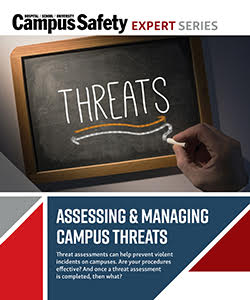You’re the professional. Is this kid a threat or not?” That’s the question my director asked, fingers drumming on the athletic calendar drafts stacked on his desk. My waffling response had not provided him with the level of confidence he wanted. As with most K-12 threat assessments, clear answers are few, and predictions are reckless. Threat assessments start and often end with questions.
In this Campus Safety free report “Assessing & Managing Campus Threats” you’ll learn
- 3 Mistakes That Can Derail Your Threat Assessment Process
- How the Arapahoe Shooting Report Highlighted Flaws In the District’s Threat Assessment Process
- What to do after You’ve Suspended a Potential Aggressor
Discover if your threat assessment process is effective or vulnerable to mistakes by reading this report today.
If the child is a threat, then we take disciplinary action, perhaps put together a safety plan and coordinate with law enforcement. If the student is not a threat, we mop our collective brow and return to finish whatever work was sidelined during the investigation.
As school safety professionals, if we allow our process to end with a toggle switch conclusion and a binary type of answer, we run the risk of exposing our organizations to excessive liability, as well as our students and staff to ongoing but unmanaged threats.






